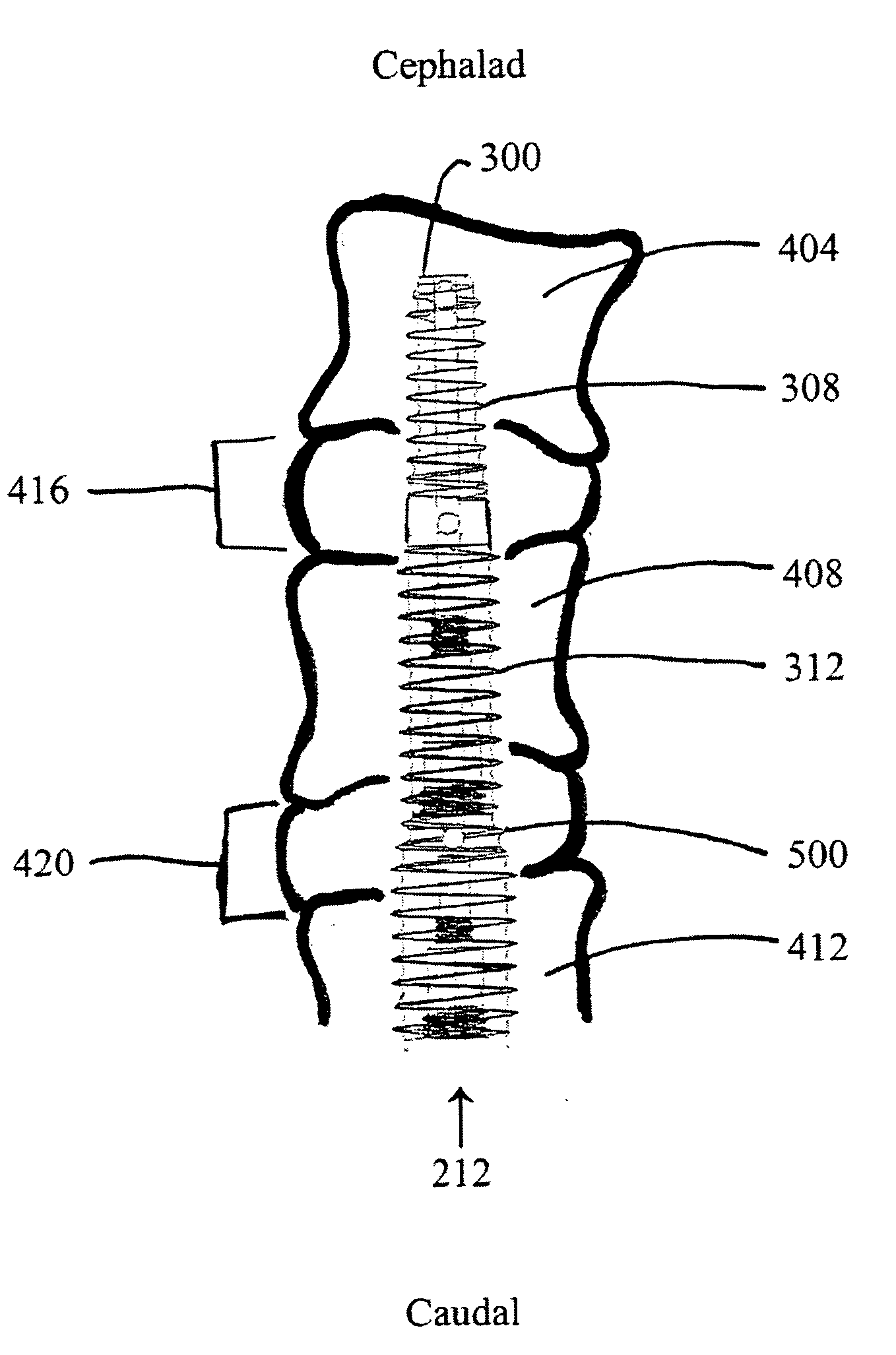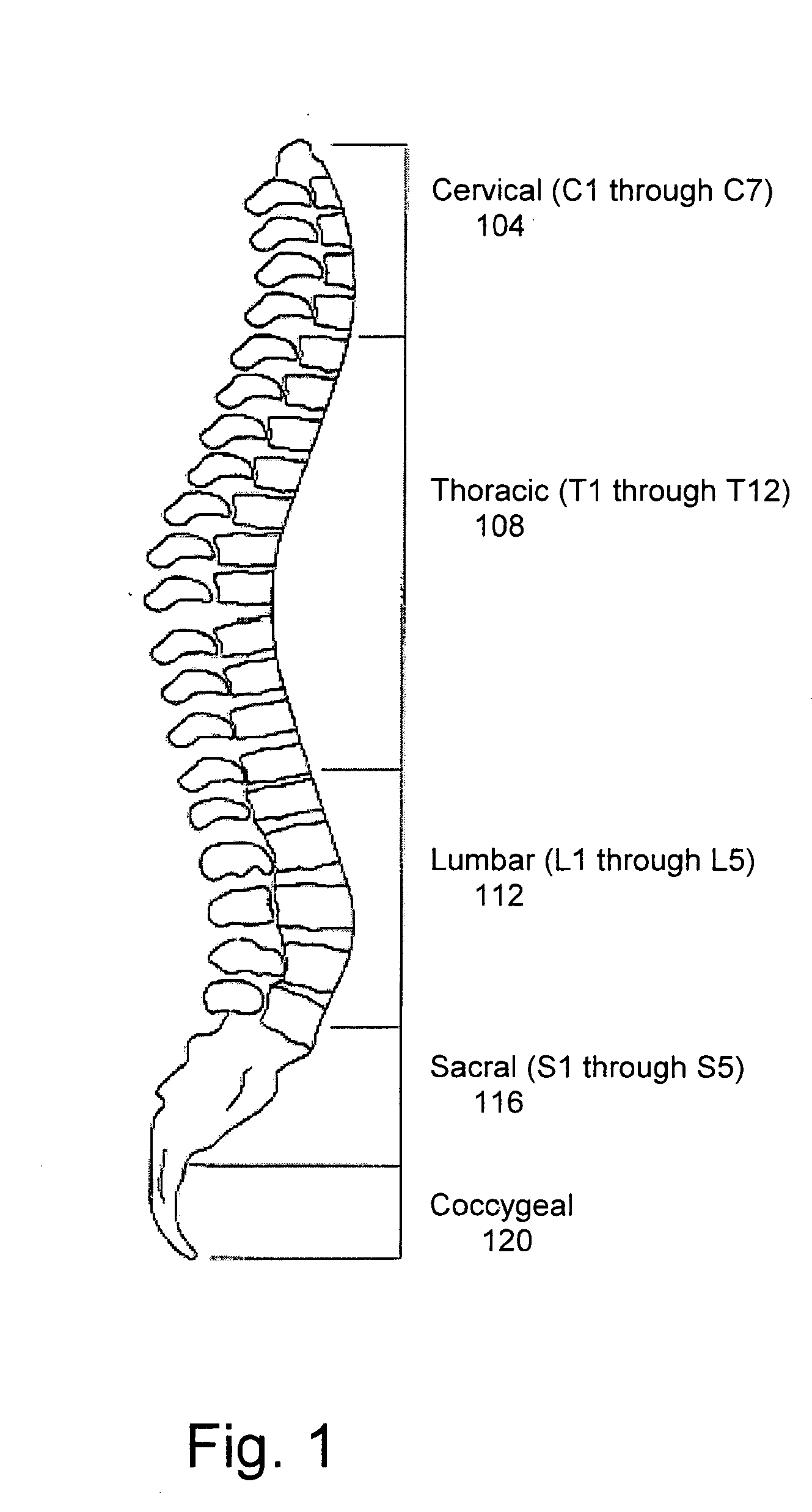Methods and apparatus for provision of therapy to adjacent motion segments
a technology of motion segment and therapy, applied in the field of implantable device assemblies and instrumentation systems, can solve the problems of affecting both workforce productivity and health care expense, affecting the success of 70% of these procedures, and reducing the efficiency of the workforce, so as to achieve the effect of reducing the risk of fracture, and improving the quality of li
- Summary
- Abstract
- Description
- Claims
- Application Information
AI Technical Summary
Benefits of technology
Problems solved by technology
Method used
Image
Examples
Embodiment Construction
[0066] As the present invention is an extension of earlier work by TranS1 Inc that has been well documented by a series of patent applications that have been incorporated by reference, this discussion will focus on the aspects of the invention that are new and the particularly relevant aspects of the previously described work that are useful for explaining the new material. The general method for establishing a channel via a trans sacral approach has been well documented and is generally applicable to the present invention as the inventive axial spinal stabilization rods and assemblies disclosed in this application are deployed via substantially the same trans-sacral access, using preparations, methods, and surgical tools and instrumentation sets described previously in co-pending and commonly assigned U.S. patent application Ser. Nos. 10 / 972,065, 10 / 971,779; 10 / 971,781; 10 / 971,731; 10 / 972,077; 10 / 971,765; 10 / 971,775; 10 / 972,299; 10 / 971,780, all of which were filed on Oct. 22, 2004,...
PUM
 Login to View More
Login to View More Abstract
Description
Claims
Application Information
 Login to View More
Login to View More - R&D
- Intellectual Property
- Life Sciences
- Materials
- Tech Scout
- Unparalleled Data Quality
- Higher Quality Content
- 60% Fewer Hallucinations
Browse by: Latest US Patents, China's latest patents, Technical Efficacy Thesaurus, Application Domain, Technology Topic, Popular Technical Reports.
© 2025 PatSnap. All rights reserved.Legal|Privacy policy|Modern Slavery Act Transparency Statement|Sitemap|About US| Contact US: help@patsnap.com



